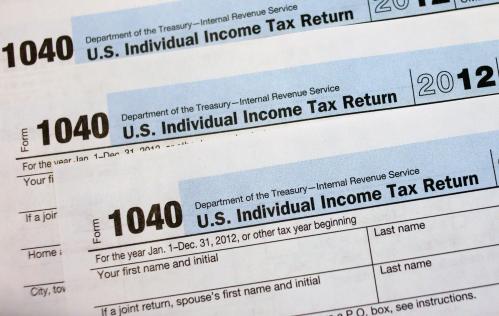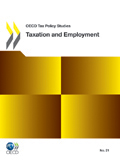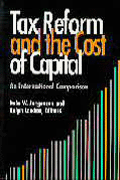The effects of state-level tax policy on states’ economic growth and on related activity such as entrepreneurship and employment have proven to be both perennial and controversial issues in academic and policy circles. In the policy world, these controversies have heated up in recent years as several states, hoping to stimulate long-term growth and new business activity, have cut taxes in various ways as their budgets have recovered following the Great Recession.
Most prominently, Kansas cut taxes in 2012, eliminating its top income tax bracket, reducing other income tax rates, and abolishing state income taxation of pass-through entities. Several other states have enacted or proposed lower income taxes, sometimes in exchange for higher sales tax revenue. At the same time, other states, most notably California and New York, have maintained higher top marginal income tax rates that were introduced originally to address revenue shortfalls.
In the academic world, a voluminous literature on taxes and state growth features widely varying methodologies and equally widely varying results. Among major, recent studies, every conceivable finding is obtained: that tax cuts raise growth, have no effect on growth, reduce growth, or do not generate clear results. The effects of different taxes; income, corporate, property, and sales; vary dramatically within and across studies.
Several factors complicate interpretation of the findings: the studies use different dependent variables, analyze different time periods, employ alternative measures of tax revenues and/or rates, include different measures of government spending, control for different independent variables, and (explicitly or implicitly) use different control groups and identification methods. A complicating factor is that state balanced budget requirements imply that revenues and spending should co-vary closely, which makes it more difficult to investigate independent influences of taxes or spending. In this paper, we develop new results on how state tax policy affects economic growth and entrepreneurial activity. Using a framework that in prior work had generated significant, negative, and robust effects of taxes on income growth, we nonetheless find that neither tax revenues nor top marginal income tax rates bear any stable relation — and, indeed, often bear a positive relation; to economic growth rates across states and over time. Consistent with these findings, we also find that tax revenues have unstable effects on employment over time, and that marginal tax rates do not affect employment levels. While the rate of firm formation is negatively affected by top income tax rates, the effects are small in economic terms.
Because there are so many specifications, studies, and results already in the literature, our goal was to build off of a previously existing model and specification. In particular, we extend the model developed by Reed (2008), who uses five-year observations and consistently finds that tax revenue levels negatively affect the growth rate of real per-capita personal income during the 1970-1999 timeframe under a wide range of specifications. Our goal is not so much to replicate Reed’s results, though we do generate similar findings for a similar time period. Rather, the advantage of using this approach is that it can be used to compare the robustness of results as the time period is updated or other specification details are altered. The disadvantage of this approach is that the identification method is not as strong as some other studies, for example those that compare the economic activity of neighboring areas that are located on opposite sides of a state line.
Using Reed’s specification, we essentially replicate his original findings, using data from 1977 to 2001. We then show, however, that the results are not robust to a variety of straightforward extensions. First, simply extending the sample period by one five-year observation to 2006 (or by two, to 2011, and thus including the effects of the Great Recession) greatly reduces the absolute value of the effects and eliminates their statistical significance.
Given the sensitivity of the results to time period, our second extension is to test for parameter stability over 1977-2006. We find that the estimated impact of tax revenues on income growth changes sign over the first and second fifteen years of the sample period. The effect is negative over the 1977-91 period and positive over the 1992-2006 period. This suggests the estimates are sensitive to the time period.
Our third extension of the Reed (2008) study decomposes tax revenues into its components: personal income, corporate, sales, property and other tax revenues. We show that different sources of tax revenues have dramatically different impacts on growth, with property taxes exerting consistently negative effects and income and corporate taxes usually exerting positive effects. Statistical tests overwhelmingly confirm that it is inappropriate to aggregate the tax revenue variables into a single aggregate revenue measure.
We extend Reed’s results in a fourth way, by including estimates of the top statutory state income tax rate and the top state income tax rate, adjusted for federal deductibility of state taxes. Inclusion of these variables does not change the basic results for tax revenues noted above, and generally the tax rate variables do not affect growth either. All of our findings described above remain in place when we provide added controls for government spending categories and a variety of economic, social, and political variables.
To explore these effects further, we look at two main components of economic growth: entrepreneurial activity and employment levels. Using the Reed (2008) framework, we show that firm formation is not consistently affected by tax revenue levels. Top marginal income tax rates appear to have negative effects that are statistically significant but economically small.1 Raising the top income tax rate by one percentage point reduces the rate of firm formation by about 0.1 percent per year but has no discernible effect on employment or income growth.
Editor’s note: The original paper was updated in December 2015.











